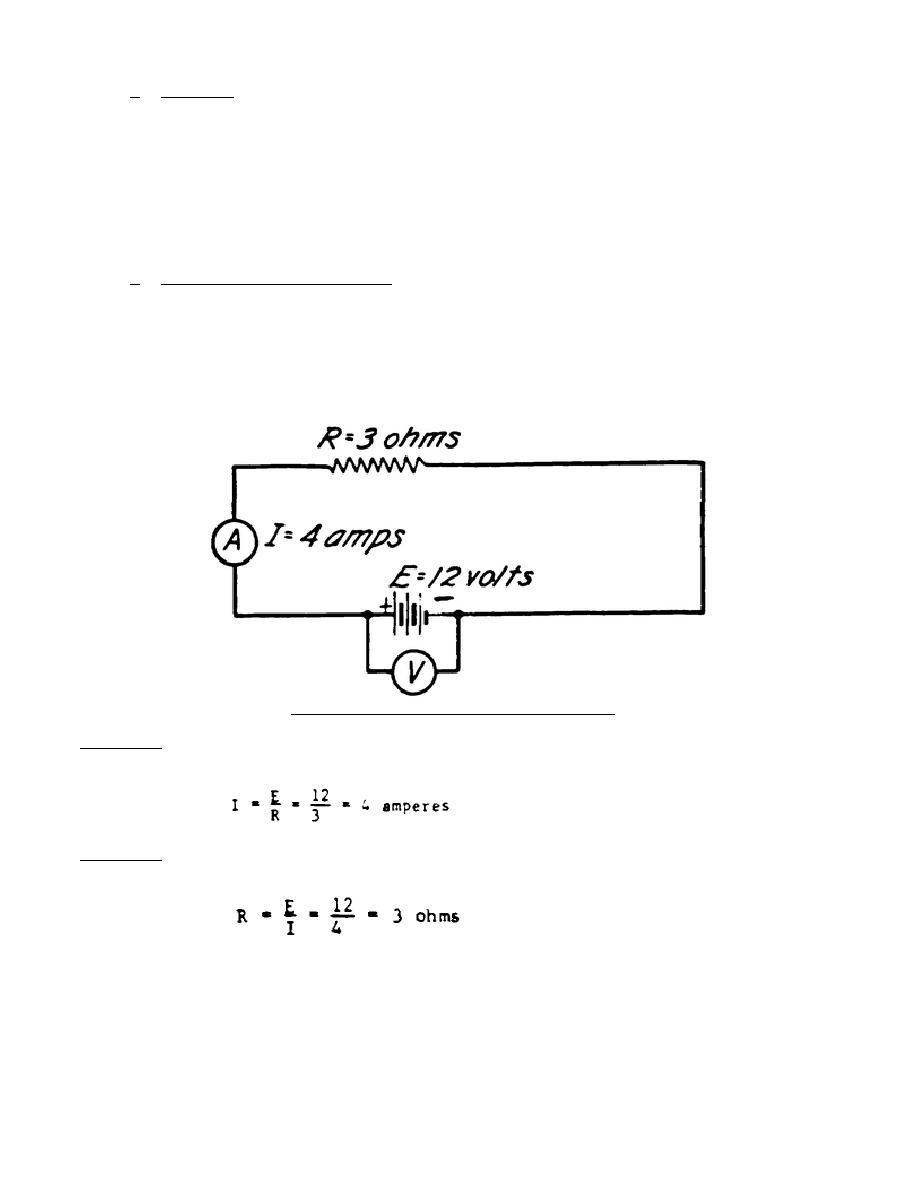
b. Circuits. To have a flow of current there must be a path, or conductor,
in which electrons can move. This conductor must be in the form of a closed loop
which provides a continuous path for the flow of current from the negative source
of EMF back to the positive side. This closed loop is known as a circuit. Current
flow will cease anytime the circuit is broken, but the electrical potential
difference will remain across the two points of the break.
In every electrical
circuit where there is movement of electrons, pressure, resistance, and current are
present and must be considered together to understand the circuit clearly. It must
be remembered that Ohm's law applies just as much to any particular part of a
circuit as it does to the entire circuit.
c. Application of Ohm's Law.
Figure 3 is a diagram of a simple series-
connected circuit.
A conductor connects a 12-volt battery, an ammeter, and a
resistor in this simple circuit. The ammeter is placed in series with the circuit
to measure current (I), and the voltmeter is placed in parallel with the battery to
measure voltage (E). The wire used to connect the various pieces of equipment is
considered to have negligible resistance in electrical problems unless a specific
value is given. The relationship of I, E, and R in figure 3 is illustrated in the
three examples that follow.
Figure 3.
Simple electrical circuit.
Example 1:
Find the current when
the
applied
voltage
is
12
volts
and
the
resistance is 3 ohms.
Example 2:
Find the resistance when the voltage is 12 volts and the current is 4
amperes.
308
6


 Previous Page
Previous Page
